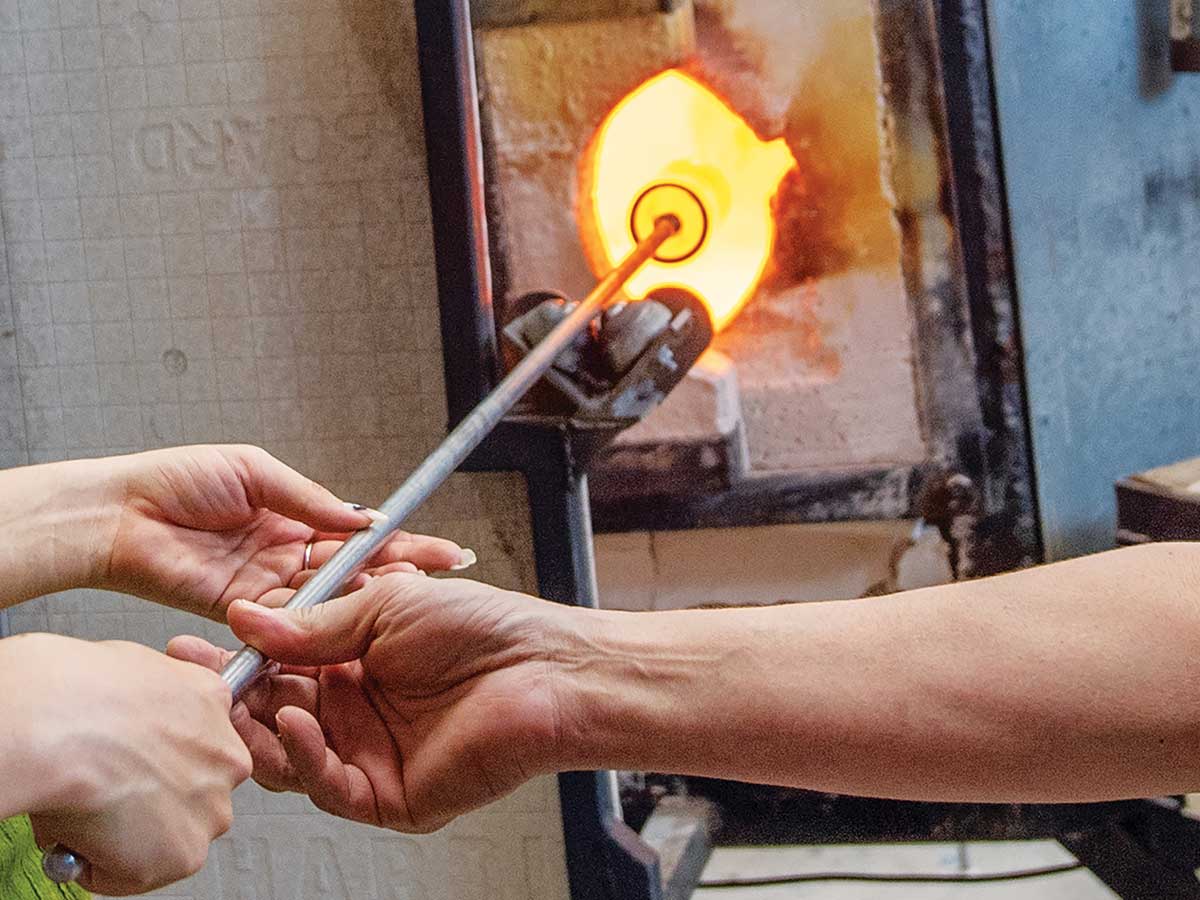50 Years of Glass Art at Punahou
The program – thought to be the country’s first glass blowing studio integrated into a high school curriculum – was started in 1972 by Hugh Jenkins and subsequently stewarded by Mark Mitsuda ’88 for the last 23 years.
Related: Hotshots – Punahou’s Glass Art Masters
Celebrating 50 Years of Glassblowing at Punahou
The last five decades have been a continuous metamorphosis for glassblowing at Punahou; the program’s scale is larger, its reach is broader and its facility is loftier than the makeshift outdoor space where Jenkins, who was 27 at the time, hosted his first class. The evolution continues till this day, as the program sets new sights on a more sustainable future and increased diversity, with the help of instructor Tracy Kirchmann, who joined the department in 2021.
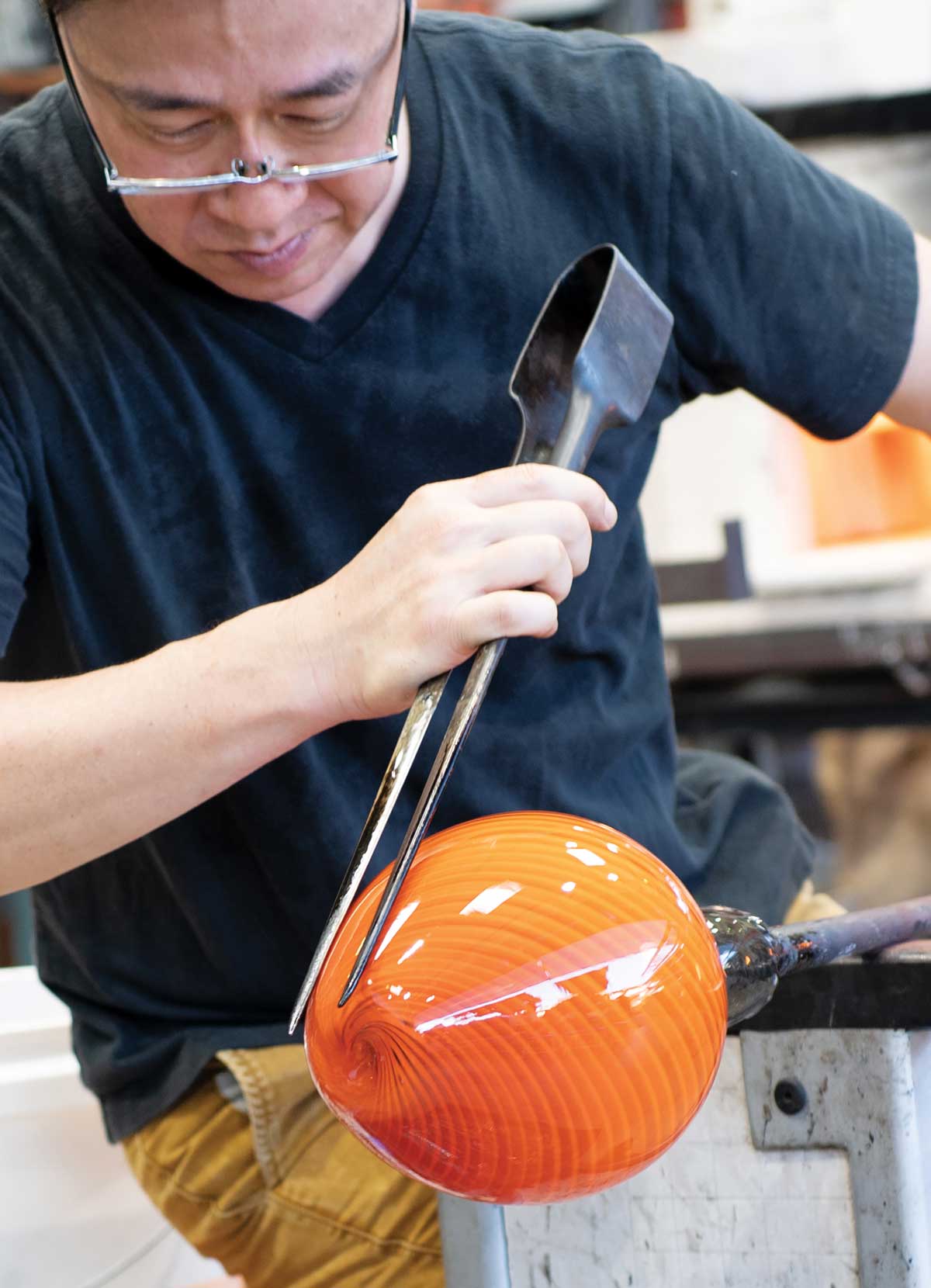
But core tenets, like its integration of art, science and ingenuity, are mainstays. Another mantra holding steady: The program’s ability to shatter expectations. It’s reflected in the cadre of influential glass artists that went through the program, the likes of: JP Canlis ’92, Evan Jenkins ’94, Geoff Lee ’92, Lee Miltier ’86, David Naito ’92, Boyd Sugiki ’87, Chuck Vanatta ’85 and Jonathan Yao ’01. (See some of Punahou’s Hotshots in the glass world.) The next generation of glass artists is being molded today, with the program averaging 100 juniors and seniors per semester. Students can enroll in a beginning glass class for a semester and continue their studies in a more advanced class, independent studies and the student-run glass club.
“When we were starting out, no one ever intended that the glass shop was going to create glass professionals, it was simply an expansion of Punahou’s art program. I didn’t even think it was going to happen,” said Jenkins, who has been described as part mad scientist, inventor, chemist and teacher. “In that sense, we shot way beyond the original vision for why we did it – and why it’s lasted.” Forging high-impact results from unexpected sources has been a hallmark of the program since its inception.
A Series of Fortuitous Events …
The path that led Jenkins to establish what is today the country’s longest-running high school glass art program was circuitous, to say the least.
Back in 1969, he was part of a group of UH ceramic artists building a glass studio in Kaka‘ako, which included students of famed artist Claude Horan. “If you wanted a glass studio, you had to build it yourself back then,” Jenkins said.
In the studio, dubbed the Foundry Glass Workshop, Jenkins got his first taste of the excitement of glassblowing. Having spent summers growing up in California under the tutelage of his father, who was a crafts teacher, Jenkins quickly mastered the technique and began teaching classes.
“When we were starting out, no one ever intended that the glass shop was going to create glass professionals, it was simply an expansion of Punahou’s art program. I didn’t even think it was going to happen.” — Hugh Jenkins
The shop came to the attention of then Academy Principal Win Healy, who was familiar with Jenkins through his work as a young substitute teacher. Intrigued after visiting the workshop, Healy offered Jenkins a full-time position at Punahou – if he agreed to create a glass studio and program at the School. “That opened the door for something pretty adventurous for a high school,” Jenkins recalls.
In its first iteration, Punahou’s glass studio was just a roof over a driveway on campus. Jenkins had repurposed materials from across the Island and involved students so they could learn how to build a glass studio as well as develop glassblowing techniques.

“There was no way in 1972 that we knew we would have a 50-year anniversary. I was only 27, I didn’t know what 50 years would look like.” — Hugh Jenkins
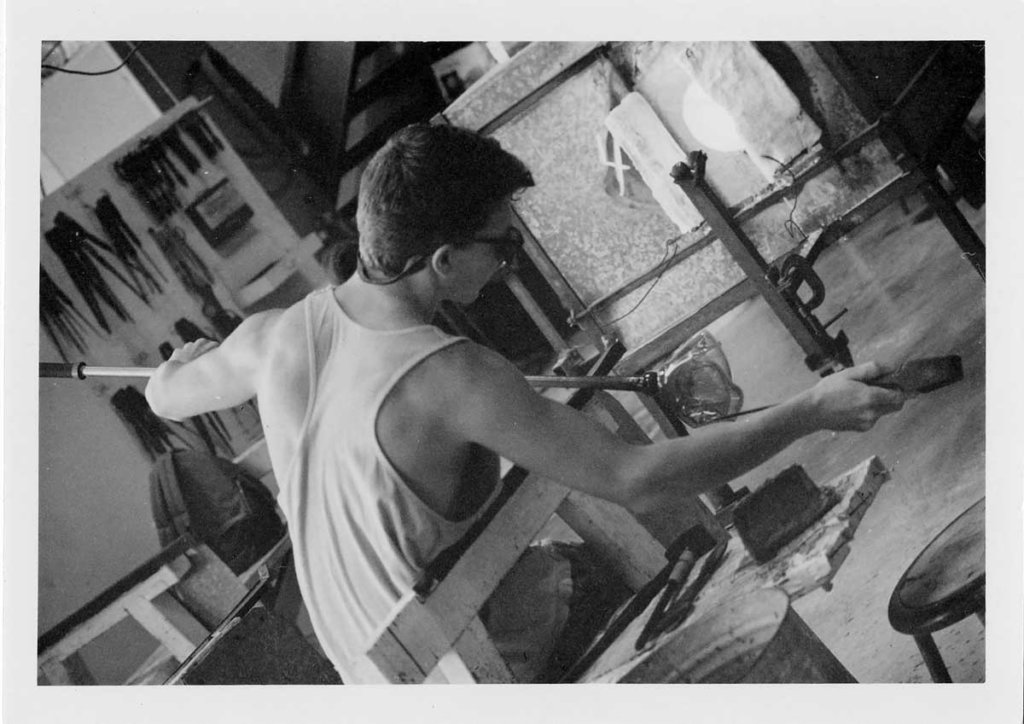
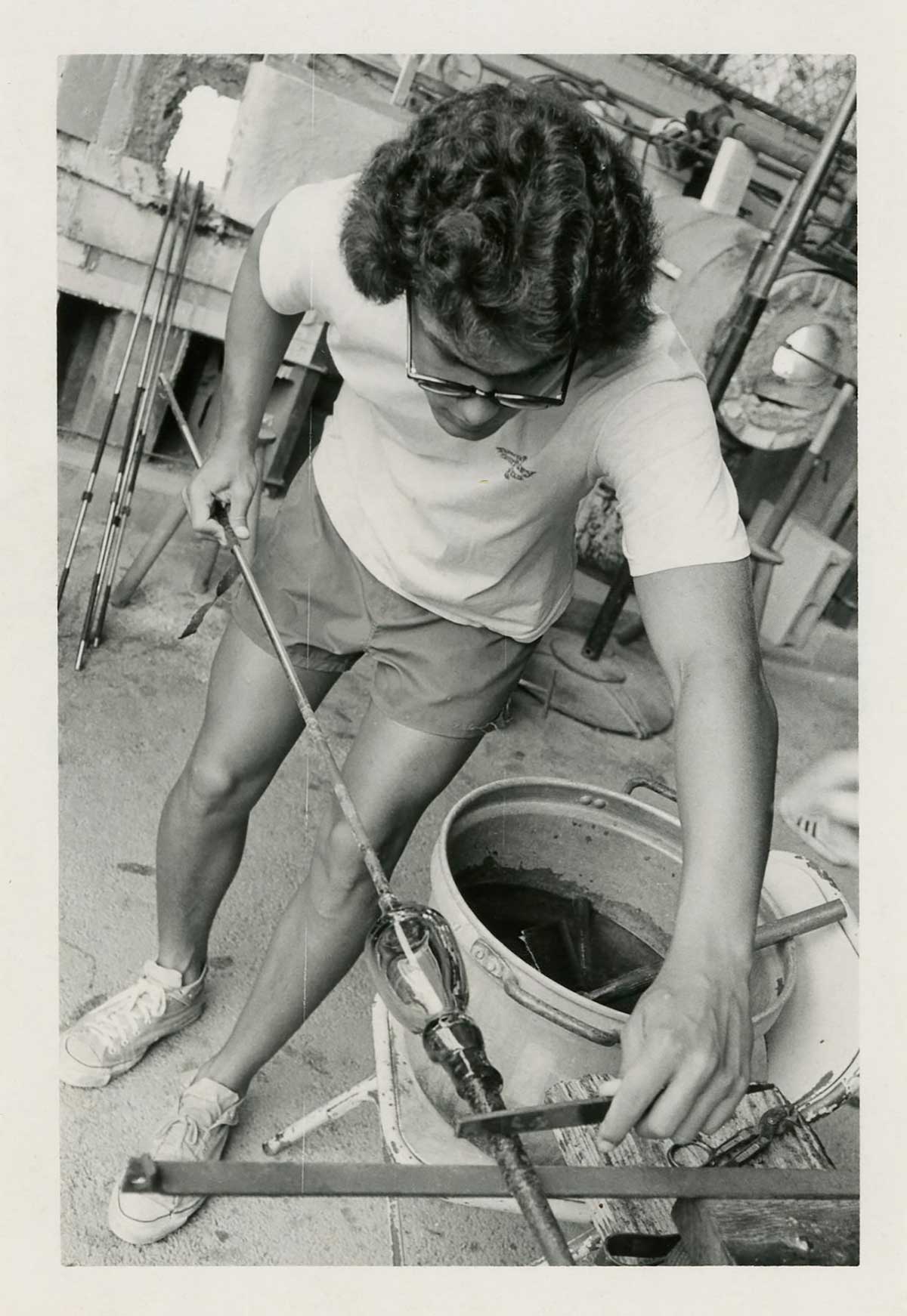
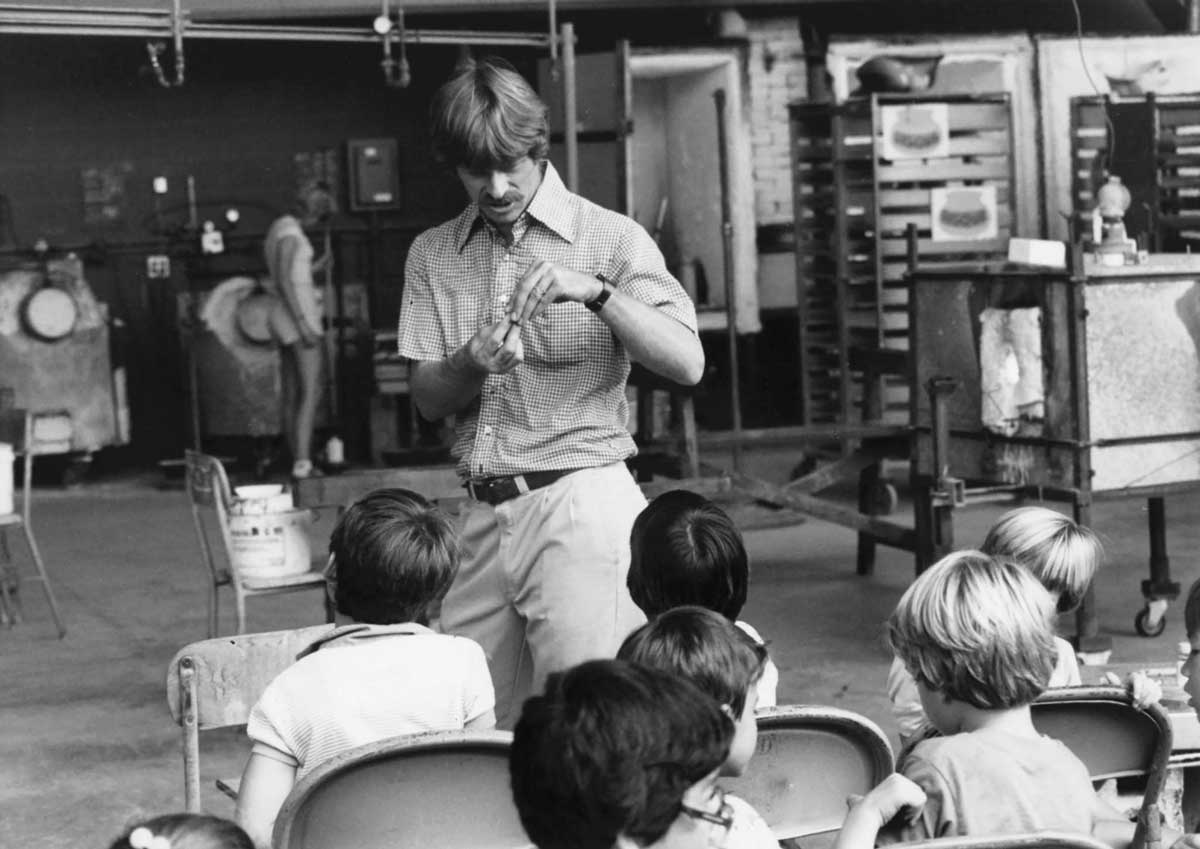
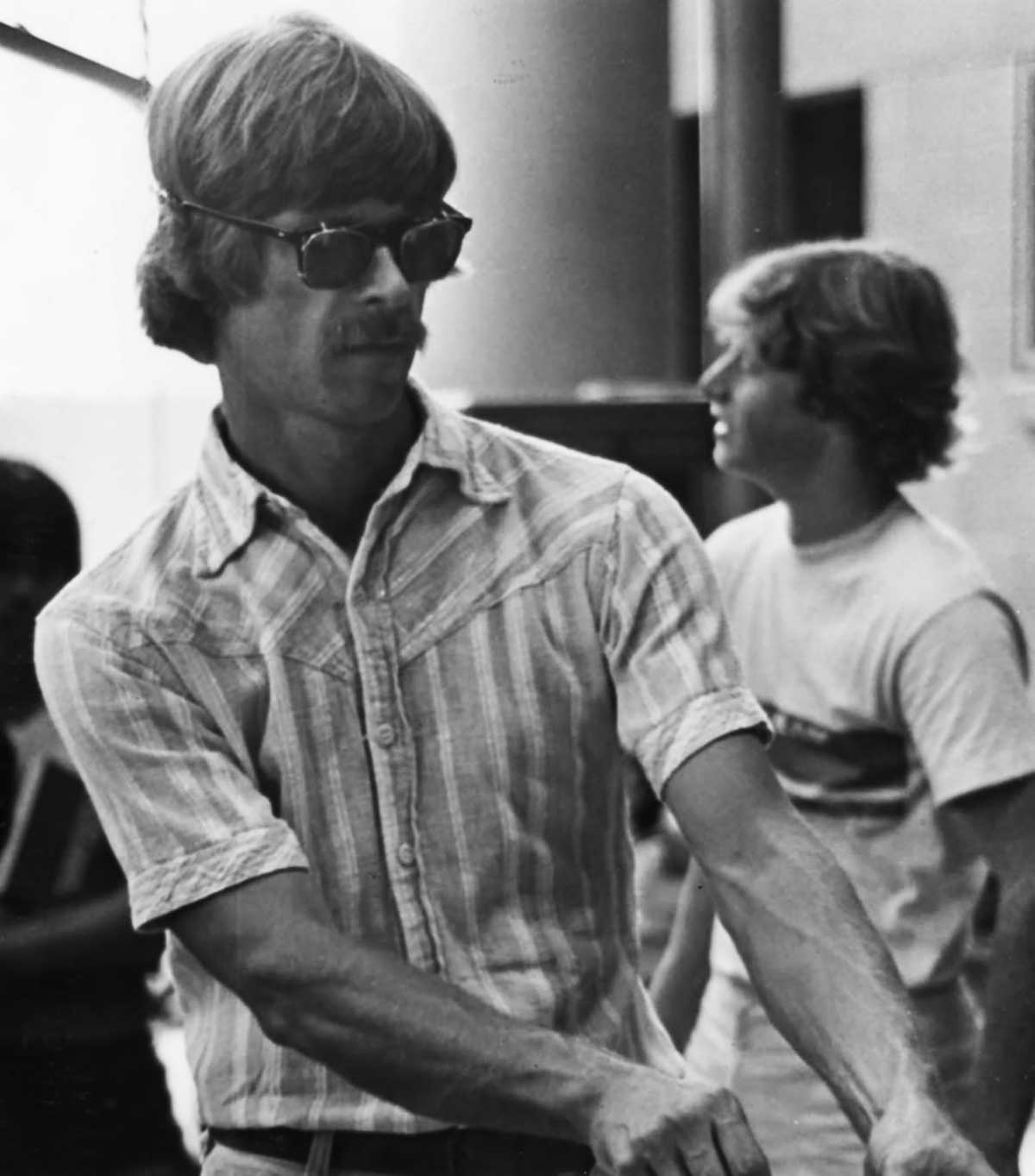
Over the years, Punahou’s glass shop has transformed into an operational powerhouse. Situated today in the Samuel and Mary Castle Art Center, the studio boasts two furnaces and equipment for eight individual workstations, including blowpipes, punties and other tools. To accommodate the large volume of students, the equipment in the shop has been specially designed by faculty and fabricated with the help of a dedicated group of current and former students, who assist with the fabrication and maintenance of the equipment during the summer.
Through a New Lens
When Jenkins retired in 1998, there was wide departmental consensus that Mitsuda, former protégé and teaching assistant, would carry the torch. Mitsuda was working in upstate New York creating handblown tableware for Neiman Marcus, Barneys and exclusive galleries. Though enjoying the vibrant artist life, Mitsuda felt the pull back to Punahou. “It is rare that you get the opportunity to give something back to someplace that has given you so much,” said Mitsuda, whose mother Amy headed the Music Department and Music School. More than 20 years later, Mitsuda is happy with his decision. “I had no idea that I would love teaching as much as I do.”
Under Mitsuda, the glass program flourished. Students in their junior and senior years can now take glass blowing along with an independent studies course in glass. Mitsuda calls glass “the ultimate equalizer” because almost everyone comes into the program without any experience. But students are quickly pulled in by the magic of the art form with the most important lesson not being in the successes – but in the failures.
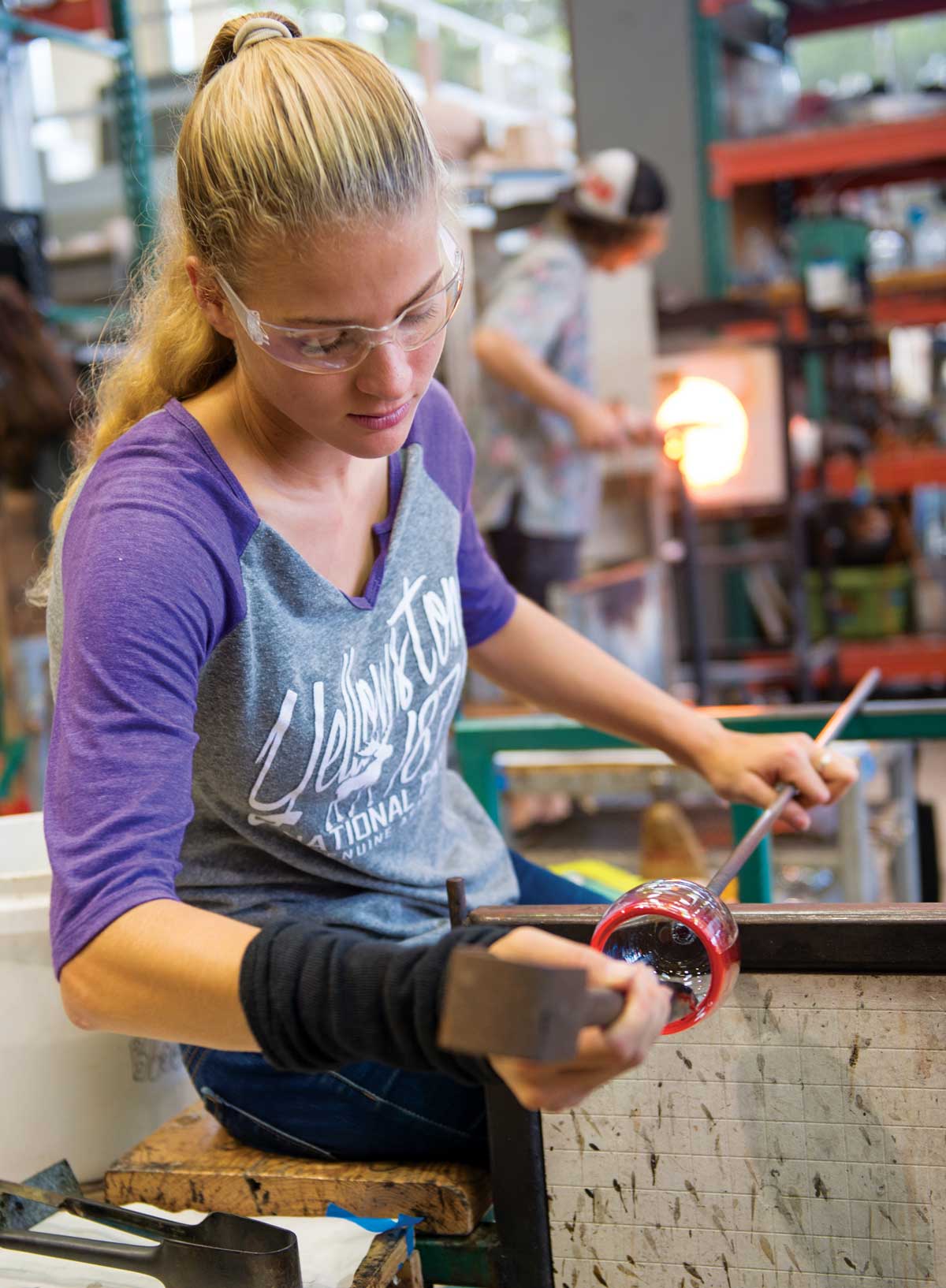
“When you fail, you fail spectacularly and dramatically, with glass shattering into a million pieces on the floor,” Mitsuda said. This can initially be “soul crushing,” but soon becomes a source of immediate feedback and an addictive puzzle to be solved – and the options are limitless for students who overcome the ups and downs of this art form.
A Lustrous Legacy
Reflecting on the lasting impact of the program, Jenkins said, “there was no way in 1972 that we knew we would have a 50-year anniversary. I was only 27, I didn’t know what 50 years would look like.” Jenkins cites as highlights the lasting connections with the glass community, in Hawai‘i and beyond, and the mention of the glass program in Sports Illustrated, when the magazine heralded Punahou’s athletics. He muses whether he would have taught President Barack Obama ’79 in his senior year, had the glass studio not been moved and rebuilt that year.
“It is rare that you get the opportunity to give something back to someplace that has given you so much.” — Mark Mitsuda
A number of glass art masters have come out of the program, like Boyd Sugiki ’87, a Seattle artist who teaches innovative techniques classes around the globe and whose modern designs have earned him recognition in the field, and Mike Mortara ’79, who designed and built a successful glass studio in Volcano, Hawai‘i. Sugiki counts his Punahou art teachers as pivotal in his art career for encouraging and nurturing his interests in the arts.
After Punahou, Jenkins himself became an accomplished independent glass artist on Hawai‘i Island for 22 years with his wife Stephanie Ross. In 2006, they survived an earthquake that took one year of glass work off the shelves of the gallery and onto the floor. Jenkins is still an active glass artist.
Forging a Purposeful Path
The country’s longest-running high school glass program may be celebrating its golden anniversary – but thanks to the innovative spirit and creativity of its passionate staff, students and alumni – it feels like things are just getting started. Looking ahead, an emphasis on sustainability and enhanced diversity are at the forefront.
With fuel to heat the furnaces and glory holes, the glass industry is a heavy energy user. Teachers have come up with inventive ways to keep fuel costs down and increase sustainability. In the early days of the program, Jenkins recycled mayonnaise jars and other glass items as raw materials and built mechanisms to recapture heat from the furnaces. Fifteen years ago, he retrofitted a small furnace, used to melt colored glass, to run on used malasada oil from the Punahou Carnival. Mitsuda continued the tradition for several years, rousing students early the Sunday after Carnival to harvest the used oil.
“Mark reminds me it’s important for girls to see me in a leadership position in the glass studio. The longer I’m here, the more I realize that’s true, and I’ve gotten feedback from parents thanking me for helping their daughters.” — Tracy Kirchmann
As the glass program moves forward, the team plans to carry on the tradition, especially with the ideas of instructor Tracy Kirchmann. She learned about Punahou when she sought Jenkins’ advice at the International Glass Arts Society on energy efficiency and alternate fuels.
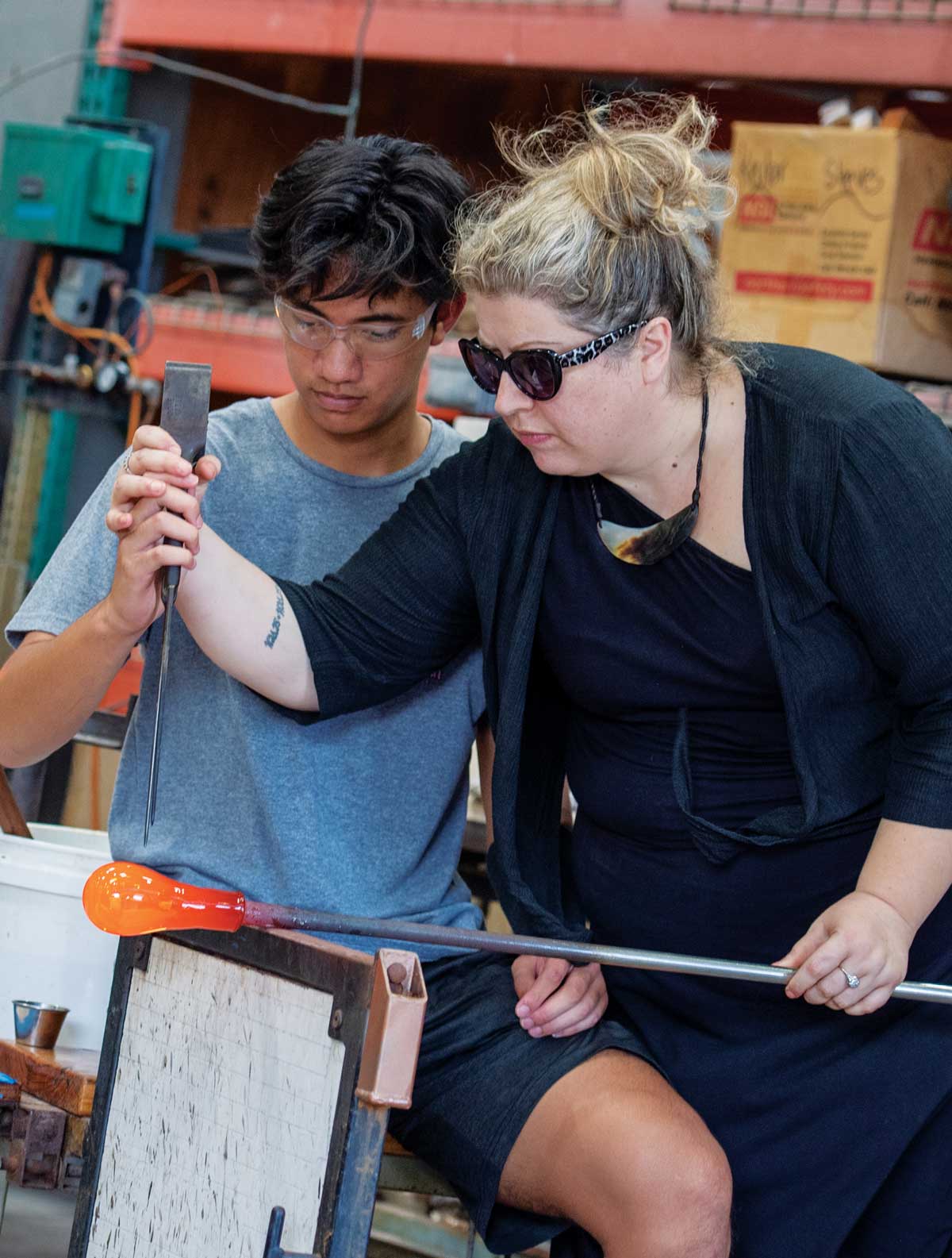
She blends her interest in glass with sustainability, social justice and entrepreneurship. In New Jersey, she helped start a mobile glass unit for public schools where students could make money by teaching.
Along with bolstering the sustainability component of the glass program, Kirchmann is paving a path for up-and-coming women glass artists in a male-dominated field.
“When you fail, you fail spectacularly and dramatically, with glass shattering into a million pieces on the floor.” — Mark Mitsuda
Though Kirchmann has experienced sexism in the industry, no one in her house ever told her she couldn’t do something because she’s a girl. “So, I don’t really give a lot of mind to it, but Mark reminds me it’s important for girls to see me in a leadership position in the glass studio. The longer I’m here, the more I realize that’s true, and I’ve gotten feedback from parents thanking me for helping their daughters.”
Punahou will celebrate the 50th anniversary of glassblowing with a special exhibit in Kirsch Gallery in late February 2023.

